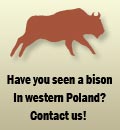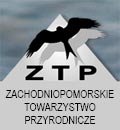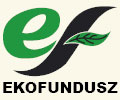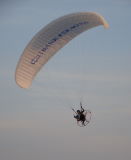Menu
© 2008
All Rights Reserved
News
Herds increasing
The herd in Drawsko Forest has been very cautious for the last few weeks. They have grown in number, with three calves already born to them this season, but cows continue to leave the group, which means that we can expect further births imminently. The bison are feeding on the meadow between two forests, close to Pełknica and Leniwka,. They keep to such secluded places, and do not travel large distances. This represents a significant change in the herd's behaviour, due to the presence of the calves.
The Mirosławiec Forest herd has increased in size by at least two calves. Lately, the bison have split into two groups, both of which stay mainly within the forest. The larger group consists of around 30 individuals, and has chosen the area surrounding Lipien and Toporzyk. Two additional groups, each of several bison, remain further south, in the forest between Hanki and Piecnik. Below are the most recent photographs of the bison from Mirosławiec Forest, with this years calves.
Added 21.06.2010 MMT
![]()
May calves
In the last ten days of May, two baby bison were born: The cow named Karwia left the herd around 20 May. She gave birth to a cow, in a secluded place known only to herself, and returned to the herd on 28 May. The second female, Kamica, left the herd to give birth on 26 May, and went to same site which she used the previous year, when she birthed a baby bull. This year, she produced a lovely daughter. It can be assumed that, as in the previous year, she will rejoin her herd in two to three weeks time. Below, the photos show both bison mothers - on the left, Karwia; on the right, Kamica.
Added 31-05-2010 MMT
![]()
Bison's Favourite Places
The GPS telemetry collars which we put on our bison in the winter, enable us to follow their whereabouts. The most interesting data that we are receiving is from Mirosławiec Forest, where previously, the GPS telemetry information was rather limited. Currently, this herd has five GPS collars, and the data we have collected from these paints a picture of the bison's favourite places throughout the year. Since last week, practically all cows with youngsters, plus the young bulls, left Betyń Lake and moved to the forests of the Lipien area, Toporzyk and Wałeckie Forests. This can be seen on the map.
In Drawsko Forest, the telemetry collars have been working constantly for two years, and thanks to this, we know that the bison favour the same places at certain times of year: In spring 2009, their preference was for the western corners of Drawsko Forest, and this year is the same. See map for further information.
Added 9-05-2010 MMT
![]()
Feeding station for the bison in Świerczyna Forest
For a number of years, we knew that there were a few bison present in the area of Świerczyna Forestry, in the Laski Forest. This winter, the bison were regularly given extra food, in the area of the military airbase, and thanks to this, it was possible to establish that there were two bulls, and one cow with calf, living there permanently. In conjunction with Świerczyna Forestry, we designated a site for a new bison feeding station, where food will be provided for the animals in subsequent years.
Added 9-05-2010 MMT
![]()
The end of winter feeding
In the first days of April, the feeding stations were restocked for the last time. During the previous autumn, we reasoned that the oats which we had purchased would last for at least one and a half seasons, but a very long and severe winter has exhausted our supplies fully. Thanks to this, the bison came through the winter in good condition, together with the calves born last autumn, which had previously given us cause for concern.
Added 6-04-2010 MMT
![]()
New arrivals in March
In the Drawsko herd, a five-year old bison gave birth to a cow on 26 March this year. This is the earliest documented birth for the West Pomeranian bison. Usually, the first calves are not born until May in this herd, and subsequent births then occur until November. The data collected in Bialowieza Forest show that March births are not unusual, and that the young bisonettes are not exclusively born in December, January and February.
The photo above shows a bison mother with a healthy calf - on the left, two days after birth; on the right, a week later.
Added 6-04-2010 MMT
![]()
New telemetry collars now on the bison
As the end of March approached, we finished the task of exchanging the telemetry collars: This season, we managed to fit nine new GPS collars. In total, the West Pomeranian bison now have 12 individuals fitted with collars, the remaining three being VHF-collars. The transmitters have been fitted to female bison, as they make the decisions governing herd movements. As the data sent by the new collars illustrate, in Mirosławiec Forest, the bison have formed three sub-groups, with exchange of individuals between these groups: Prior to this, we had thought that there were only two sub-groups present.
Added 6-04-2010 MMT
![]()
Highway Adventure
Today, as we attempted to fit a radio telemetry collar on one of our bison from the Miroslawiec herd, she behaved in a very unusual way. Having tranquillised her, she then took off from the middle of the forest and ran a few kilometres to the main road. It was by the side of that very busy road that, affected by the sedative, she finally lay down. There was a real danger of her coming round and running into the road. Luckily, several emergency services came to the rescue: the police and the fire brigade, town wardens from Miroslawiec, local forestry rangers, hunter's brigade and the employees of the Regional Environment Protection Agency in Szczecin. Their joint actions were very efficient. Once the radio telemetry collar was fitted on the bison and the antidote was given to her, they stopped all the traffic and enabled the bison to slowly and peacefully return to the herd.
Despite the fact that the traffic was very busy at the time, drivers showed great restraint during such an unusual event.
WE WOULD LIKE TO SAY A BIG THANK YOU TO EVERYONE INVOLVED IN HELPING US AND TO ALL THE DRIVERS FOR SHOWING SUCH PATIENCE AND CONSIDERATION
Dodano 26-02-2010 MMT
![]()
Exceptionally snowy winter.
There is a 50 - 60 cm covering of snow in the bison forests of Miroslawiec and Drawsko. This causes the bison serious difficulty in finding food. The animals gather round the feeding stations, where the feed is supplied all the time. Beetroots seem to be favoured by the bison.
At the end of January the bison livestock was counted. The number of individuals in Western Pomeranian region is no less than 67 and for the first time in bison history, there were more than 10 calves born in one season. Details >>>here<<<.
Added 4-02-2010 MMT
![]()
Female bison killed.
On Saturday 2 January 2010, as a result of a tragic mistake, a nine year old female bison we had named Jednoroga (Singlehorn), was shot dead during a hunt. The Miroslawiec herd comprises 50 individuals, and these bison are not easy to distinguish. However, Jednoroga was clearly recognizable. She was brought to Miroslawiec forest from Bialowieza in 2005, as one of eight bison in order to supplement the local population. She gave birth to three calves here; unfortunately, her latest calf has now lost it's mother.
Added 5-01-2010 MMT
![]()
CHRISTMAS 2009
Added 24-12-2009 MMT
![]()
The Zachodniopomorskie bison on TV again
On Sunday 22/11 this year, at 6:30, on channel TVP2, another part of "One Thousand Storks", called "Text Message from the Bison", was aired. Click below for web-link.
Added 01-12-2009 MG
![]()
New Picture Gallery
You can see the latest photos of the herd from Nadleśnictwo Drawsko, which now comprises 15 adults and six calves. In the new Gallery 3, the difference in size between calves born in summer and in autumn can be clearly seen.
Added 17-11-2009 MMT
![]()
The Zachodniopomorskie bison on TV
On 8th November, Polish TV aired another episode of the nature documentary "One Thousand Storks", called "Pomorskie Bison". Click below for web-link.
Also on Sunday 22/11 this year, at 6:30, on channel TVP2, the bison story continues with a programme entitled "Żubr pod lupą" ("Bison under the Magnifying Glass").
Added 13-11-2009 MG
![]()
Autumn calves in Mirosławiec
 Autumn calving in Nadl.Mirosławiec herd: This year's number of calves increased by five. The calves are doing well and bravely follow the herd, which has already started using the feeding stations.
Autumn calving in Nadl.Mirosławiec herd: This year's number of calves increased by five. The calves are doing well and bravely follow the herd, which has already started using the feeding stations.
Added 13-11-2009 MG
![]()
Bison female Karoca with calf
Karoca, the mother of the baby bison born around 20 October, joined the herd. The photograph shows the mother with calf.
The GPS telemetry shows very clearly that the herd is moving a lot slower and takes frequent stops of several hours each. This behaviour is indicative of letting the smallest calf set the pace, until it becomes stronger and is able to keep up.
Added 29-10-2009 MMT
![]()
Polish radio-collar
We hope that our troubles with the German radio-collars made by Vectronic-Aerospace are over. These lasted on the bison for an average of four months, despite the fact that they should have had a two year lifespan.
A Polish manufacturer of telemetry equipment designed an improved version of this device, which eliminated the design fault causing a breakage in the power supply cable.
In the Polish version, the batteries and positioning module are placed in one unit at the base of the collar. For it to successfully take a GPS reading and send this over the GPRS network, the most sensitive modules and antennas were required.
We currently have three such collars in use, and are pleased with their operation.
Added 24-10-2009 MMT
![]()
Autumn births
Around the 25 September, a four-year old cow gave birth to a calf in Drawsko forest. The birth probably happened within the herd. At this time, the gender of the calf is unknown.
On 20 October, another calf was born. The mother was an experienced nine-year old cow named Karoca. She left the herd two days prior to the birth, and has not yet returned.
Autumn birth is a frequent occurrence amongst bison; calves cope quite well with the colder weather of autumn and winter.
Added 24-10-2009 MMT
![]()
Bison female Ósma in the snare for the second time
On 18 September 2009, a four-year old female named Ósma from Dobrzany forest was caught by a snare for the second time in her life. Thanks to accurate information regarding her whereabouts, from a mushroom picker, she was located, immobilised and later freed from the steel cable tangled around her horns. Thankfully, on this occasion, she was uninjured. During this ordeal, we exchanged the broken Vectronic collar for the first of the Polish-made GPS units. She has a visible scar on her left front leg from her first encounter with a snare, which we removed in March this year.
Added 24-10-.2009 MMT
![]()
Bogged-down bull
 A bull walking along a peat-bog was unfortunate to choose the wrong path, and as a result, got stuck in a bog. When Mr and Mrs Szereniewscy from Mirosławiec found him, he was up to his neck in the mud. It was noticeable that the animal was constantly attempting to escape from the bog, unfortunately without success. Lech Jaskulski, Tadeusz Malinowski, Piotr Saryczew and Bogdan Kruczuk were called in to assist, and together, managed to free the bison. The bison was tired, cold and hungry, and did not return to the forest for six hours. On behalf of the bison, THANKS VERY MUCH FOR THE HELP!
A bull walking along a peat-bog was unfortunate to choose the wrong path, and as a result, got stuck in a bog. When Mr and Mrs Szereniewscy from Mirosławiec found him, he was up to his neck in the mud. It was noticeable that the animal was constantly attempting to escape from the bog, unfortunately without success. Lech Jaskulski, Tadeusz Malinowski, Piotr Saryczew and Bogdan Kruczuk were called in to assist, and together, managed to free the bison. The bison was tired, cold and hungry, and did not return to the forest for six hours. On behalf of the bison, THANKS VERY MUCH FOR THE HELP!
Added 01.09.2009 MMT
![]()
Commotion in the herd
The breeding season causes constant changes in the structure of bison in the Nadleśnictwo Mirosławiec herd. Pushing and shoving amongst the cows to establish the pecking order is a common occurrence. During these scuffles, calves often become battered. Below is a series of photographs of two females clashing, with a calf becoming accidentally involved.
Added 1.09.2009 MMT
![]()
New bison feeders
Construction of three new feeding stations has just been completed: two in Drawsko forest; one in Mirosławiec forest. Soon, we will announce the bid to buy feed for the bison for the 2009/10 season, and this feeding will commence in the middle of October.
Added 1.09.2009 MMT
![]()
New film
In the Movies section, there is footage of an adult male bison walking along at dawn towards the territory of the Nadleśnictwo Mirosławiec herd.
Added 01.09.2009 MG
![]()
Bullfights
Fights between massive, mature males are a vital element of the breeding season, in order to secure the attention of the females. Struggles between these huge animals are exhausting, and after a few minutes of intensive battling, the rivals rest side by side. You can see photos of this in new Gallery 5.
Added 31.08.2009 MG, JW
![]()
Calves from Mirosławiec forest
There were three calves born this year in the Mirosławiec herd. One of the mothers is fitted with a radio-collar.
Added 31.08.2009 MG, JW
![]()
Names for newborn calves
 Kasata, who is a very good mother, has a daughter named Niunia. She often runs a bison kindergarten, and cares for other mothers' calves.
Kasata, who is a very good mother, has a daughter named Niunia. She often runs a bison kindergarten, and cares for other mothers' calves.
A female named Kamica gave birth to ason, and wewould be grateful for your suggestions for a name.
New Gallery 1 has photos of the entire herd.
Added 22.08.2009 MMT
![]()
The mating season has started
The mating season has started for the bison: The bull accompanies his chosen female constantly, making grunting noises. The cow is the object of his interest for around three days, and after nine months, one can expect a calf.
Added 22.08.2009 MMT
![]()
Rearing calves
The females give birth to calves between the end of May and the end of July. Occasionally, late births occur; last year in Mirosławiec forest, a calf was born at the end of October and survived the winter well.
The period just after the birth is difficult for both mother and young. The females are very vigilant, and may become aggressive if they fear that the offspring may be harmed. The mother may treat a human bystander as a threat if he approaches too closely, and he may be chased away by the female. Therefore we ask that you use common sense and do not approach within 200 metres when the herd has calves.
Added 15.08.2009 MMT
![]()




























